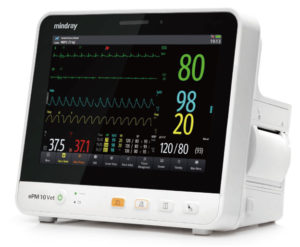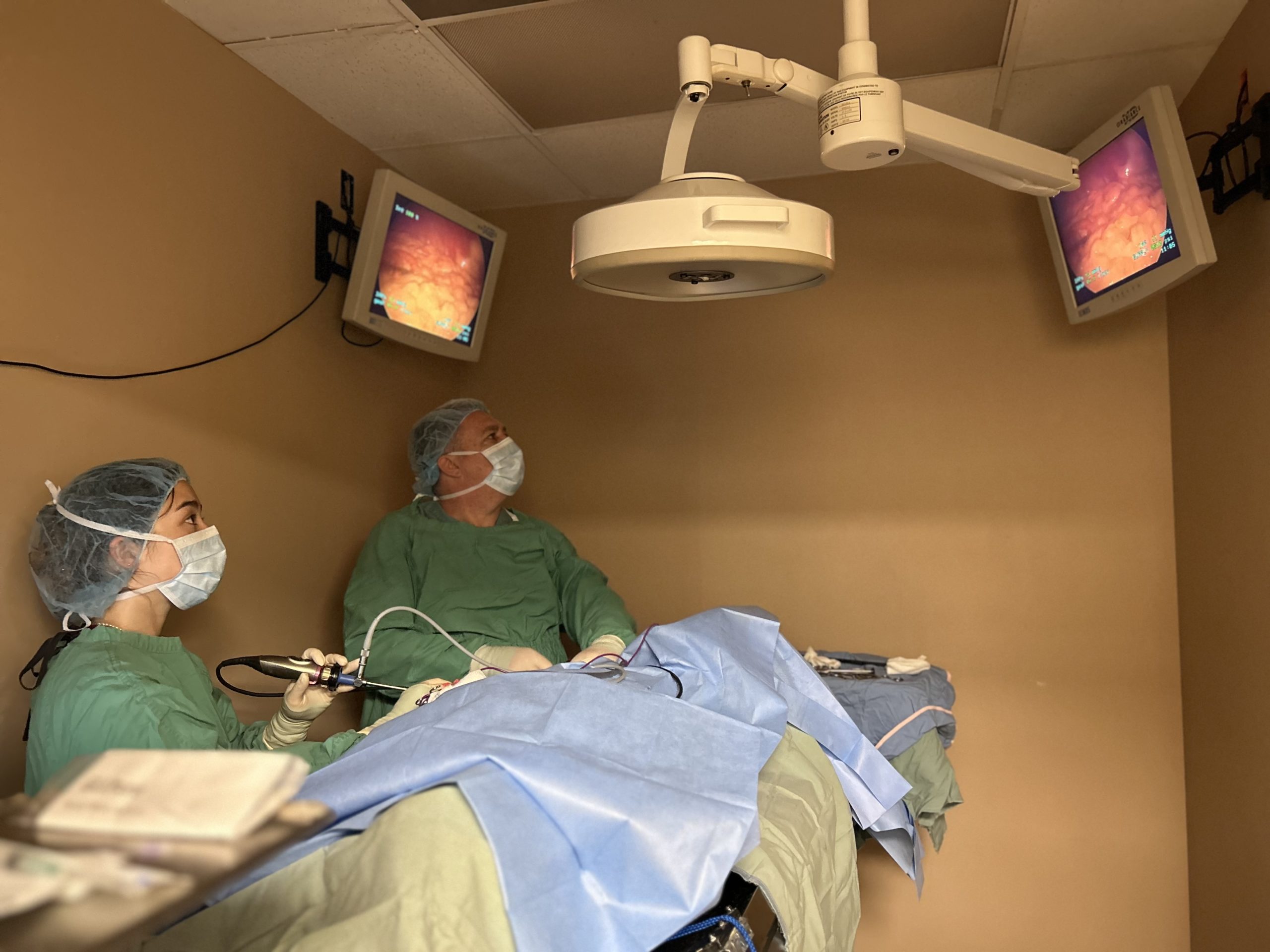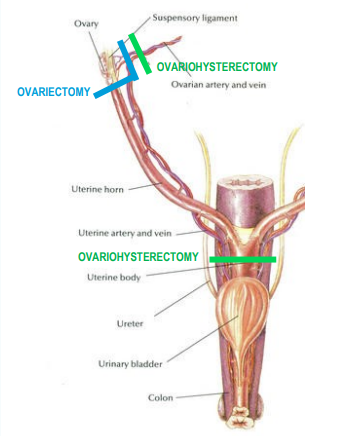While your pet is anesthetized we have a Registered Veterinary Technician (RVT) who is continuously monitoring your pet. Our most valuable monitor is our technician. They will listen to your pet’s heart, and monitor breathing and temperature while your pet is anesthetized.
Mindray Monitor
While your pet is asleep, the Mindray monitors their ECG (rate and rhythm of the heart), temperature, respiration rate, SPO2 (this is the saturation of hemoglobin with oxygen) along with CO2 – (end tidal of carbon dioxide – this tells us if your pet’s carbon dioxide level is increasing, which happens if they are not breathing deeply enough). The Mindray also monitors your pets blood pressure which is a critical piece of information. If your pet’s blood pressure is too low then blood flow to certain organs will decrease. If that occurs during surgery we are able to correct things by adjusting anesthetic depth, increasing fluids during surgery and even at times we will need to administer medication to correct the pressures.



